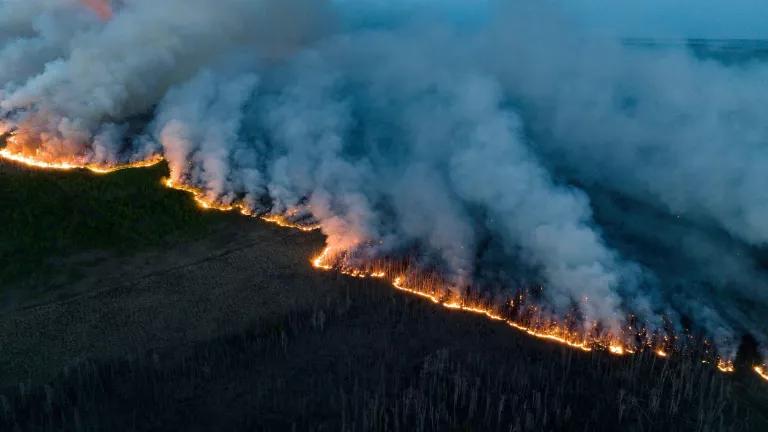Public Sector and Healthcare Essential to Climate Resilience
We can build a more climate-resilient nation with a well-trained and well-protected social infrastructure workforce.

A new report from the BlueGreen Alliance (BGA) offers a climate adaptation roadmap to Congress and the incoming Biden administration that centers public sector and healthcare workers. The Social Infrastructure Platform, an extension of BGA’s 2019 Solidarity for Climate Action Platform, argues “there is no viable pathway” to climate resilience unless we invest in—and protect—the employees who deliver essential services.
BGA defines social infrastructure as:
“The services required to promote the health and economic, cultural, and social well-being of the community.”
Much like physical infrastructure, social infrastructure can help protect lives and livelihoods from the impacts of climate change and reduce associated economic damages. However, physical infrastructure—such as a seawall—often does just one thing in one circumstance and breaks down over time. The workers who protect people from wildfires, provide safe spaces for hurricane survivors, or plant trees to keep neighborhoods cool can play multiple roles and become more effective over time as skills and knowledge evolve.
However, public sector and healthcare employees need four things to achieve their full potential as resilience workers:
1. Investment in the public sector
Most government agencies don’t have the protective equipment and staff to properly respond to the COVID-19 crisis, let alone the climate crisis. All levels of government need to reinvigorate underfunded and understaffed public services with sustained investment—especially in Black and brown communities with the most severe environmental risks and deeply inequitable access to disaster relief, healthcare, and other essential services.

2. Protection from the health and safety harms of climate change
Even the best resourced social infrastructure systems will break down if workers can’t withstand worsening heat, wildfire smoke, and other climate-related health hazards. Congress needs to modernize our federal health and safety laws, such as the Occupational Safety and Health Act of 1970, to address the realities of climate change and to provide all workers with federal protections. The laws must also be enforced. Under 2019 staffing levels, the Occupational Safety and Health Administration (OSHA) would need 162 years to visit each U.S. workplace once. Congress should remedy this unacceptable situation by ensuring OSHA has the budget and staffing it needs to hold employers accountable.
3. Support and training to engage in climate adaptation
Climate adaptation is a relatively new field, despite decades-old warnings that limiting climate-changing pollution isn’t enough on its own to protect people and natural systems. Workers need support and training to effectively carry out adaptation measures, including workforce development programs that provide a path for career advancement.
4. An expanded social safety net
Many of the workers most critical to creating a climate-resilient nation make low wages, have little job security, and don’t have access to paid sick leave or affordable healthcare. Federal action to strengthen the social safety net won’t just help individual workers—it will make it easier for entire communities to prepare for, cope with, and recover from the combined impacts of COVID-19 and climate change.

BGA’s Social Infrastructure Platform offers a host of specific federal policy solutions to bolster and maintain a robust climate resilience workforce. Healthcare and public sector employees are essential for every aspect of our national response to climate change, from building a clean energy economy to protecting our most vulnerable residents from the physical and mental health harms of extreme weather. We can build back better—as long as we have well-trained and well-protected people to do the work.



